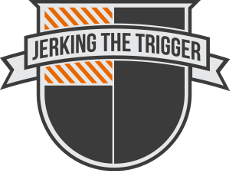No one makes better safety selectors than Battle Arms Development (BAD). Their BAD-ASS safety selector and Short Throw BAD-ASS safety selectors are some of my favorite gear that I have had the pleasure of reviewing here on Jerking the Trigger. Now we have a new safety selector option to look forward to from Battle Arms Development – the CASS-3P SA.

You can clearly see the dovetailed selector levers in this picture of the CASS-3P SA. Keep in mind that this is a prototype. Production versions will be finished to the same high standards that you expect from BAD.
The CASS-3P SA is based off of BAD’s M16 selector, the CASS-3P M16. The CASS-3P M16 was originally developed specifically for one of the oldest names in firearms to be part of the improved carbine trials. The carbine that it was developed for is still in the running. That is a pretty good pedigree for a new piece of gear.
The CASS-3P SA has the same horizontally mounted dovetailed selector levers as the M16 version but they are mounted on a semi-auto selector core. The dovetailed selector levers are what sets it apart from the BAD-ASS which uses a slotted selector lever. Like the slotted selectors of BAD-ASS, the dovetails served to take the stress of moving the selector off of the screw that secures it. The dovetails also allow the selector lever to remain attached to the core and functional in the unlikely event that the screw does break.
The levers offer the same texturing, easy to operate shape, and size as those found on the BAD-ASS. However, since the levers are dovetailed, the selector core is designed to be just a bit wider than the one on the BAD-ASS. This moves the levers out away from the receiver slightly and results in a lever that feels wider to the user.

The CASS-3P SA was developed as a semi-auto version of the CASS-3P M16 shown above.
Roger at Battle Arms Development tells me that the CASS-3P selectors are the finest machined products that BAD has completed to date. That is really saying something considering how finely made all of the BAD products are that I have used. Each and every male and female dovetail is checked against a “go” and “no-go gauge” to be sure that the levers are neither too tight or too loose. This fit is vital. If the lever is too tight, the user won’t be able to slide it onto the core. If it is too loose, it will wobble on the dovetail.
So, maybe you are reading this and thinking, ‘That sounds great, but I am spoiled by my short throw version of the BAD-ASS.” I have good news. There will also be a short throw version of the CASS-3P SA that will be released around September 2011.
The CASS-3P SA is not available for purchase yet, but while you are waiting, you can check out all of the other selector options that Battle Arms Development offers on their website.







